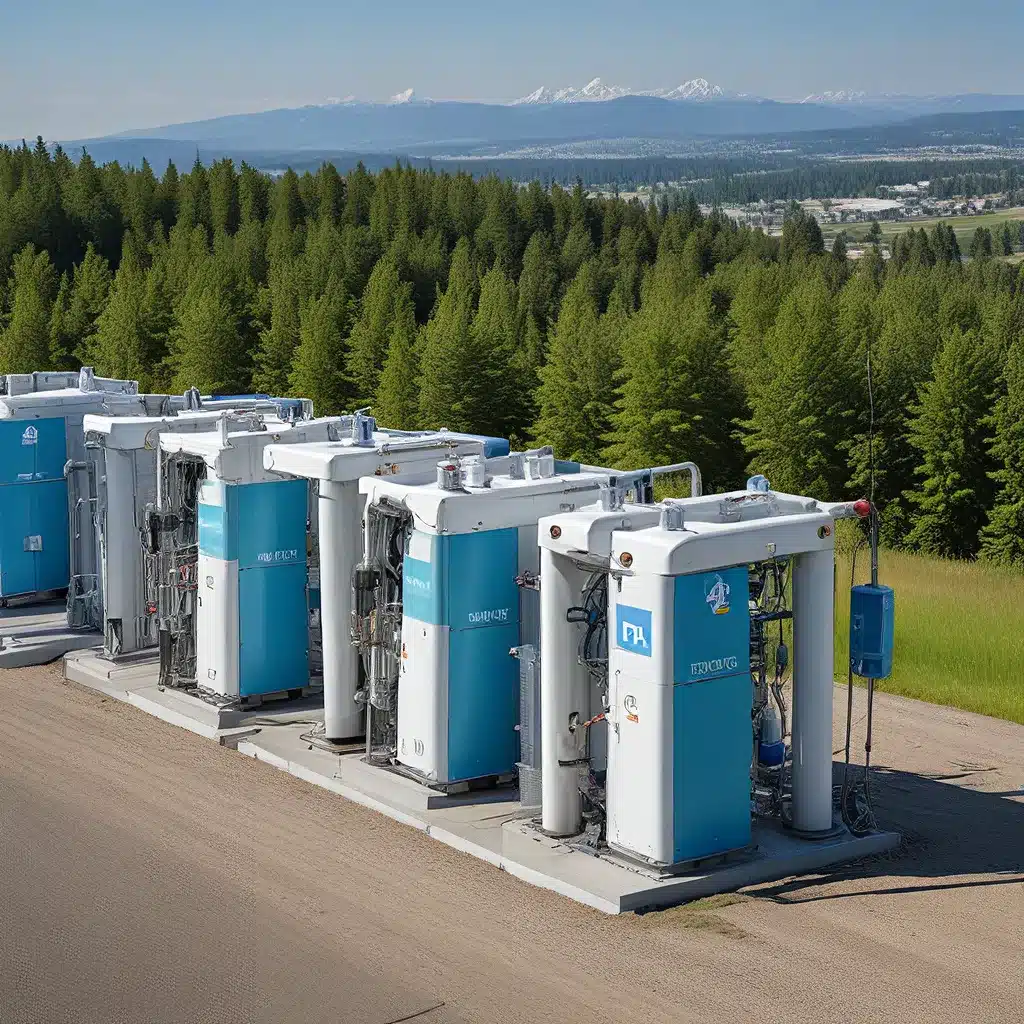
As the world grapples with the urgent need to address climate change, one of the most promising solutions on the horizon is the rise of renewable hydrogen. This clean-burning fuel has the potential to revolutionize a wide range of industries, from transportation and manufacturing to energy production and beyond. And the state of California, known for its trailblazing approach to environmental policy, is leading the charge.
The California Roadmap to Carbon Neutrality
Recently, the California Air Resources Board (CARB) released its updated Scoping Plan, a comprehensive strategy to achieve the state’s ambitious climate goals. This plan, which aims to create 4 million new jobs and slash greenhouse gas emissions by 85%, is nothing short of groundbreaking. It lays out a detailed pathway for California to reach carbon neutrality by 2045, an unprecedented milestone for any jurisdiction in the world.
What’s particularly exciting about this plan is its recognition of the pivotal role that renewable hydrogen will play in the state’s transition to a decarbonized economy. The Scoping Plan not only calls for the deployment of six million heat pumps and three million climate-ready homes by 2030, but it also emphasizes the importance of developing a robust hydrogen economy to support a wide range of clean energy applications.
Unlocking the Power of Renewable Hydrogen
But what exactly is renewable hydrogen, and how does it differ from its fossil fuel-based counterpart? Renewable hydrogen is produced using clean, sustainable energy sources, such as solar, wind, or nuclear power, rather than relying on the extraction and combustion of fossil fuels. This process, known as electrolysis, uses electricity to split water molecules into hydrogen and oxygen, resulting in a fuel that is completely emissions-free.
The beauty of renewable hydrogen lies in its versatility. It can be used to power fuel cell vehicles, provide grid-scale energy storage, and even fuel industrial processes that are traditionally reliant on fossil fuels. Additionally, renewable hydrogen can be combined with captured carbon dioxide to produce synthetic fuels, further expanding its applications and reducing the overall carbon footprint of energy-intensive industries.
Powering a Sustainable Future
The Biden-Harris administration has recognized the immense potential of renewable hydrogen, announcing a $7 billion investment in the development of regional clean hydrogen hubs across the United States. These hubs will catalyze the creation of multistate hydrogen ecosystems, laying the foundation for a nationwide hydrogen economy.
In California, the state’s Hydrogen Coalition is working closely with the government to ensure that renewable hydrogen plays a central role in the Scoping Plan’s implementation. The coalition is advocating for policies that support the production, distribution, and use of this clean fuel, with the ultimate goal of enabling deeper penetration of renewable electricity and reducing short-lived but potent methane emissions.
The Challenges and Opportunities Ahead
Of course, the transition to a renewable hydrogen-powered future is not without its challenges. The production costs of this technology have historically been higher than those of traditional fossil fuels, and the infrastructure required for large-scale hydrogen storage and distribution is still in its early stages.
However, the Bipartisan Infrastructure Law and the Inflation Reduction Act have provided significant federal funding and incentives to drive down the costs of clean hydrogen production and spur the development of the necessary infrastructure. With these investments, coupled with the ambitious goals set forth in California’s Scoping Plan, I believe we are on the cusp of a renewable hydrogen revolution.
As we navigate this exciting transition, it’s important to remember that the path to a decarbonized economy is not without its complexities. There are likely to be ongoing debates and evolving conclusions as new technologies and strategies emerge. But with a steadfast commitment to innovation, collaboration, and a shared vision for a sustainable future, I am confident that we can overcome these challenges and unlock the full potential of renewable hydrogen.
The Hydrogen Opportunity for California and Beyond
For California, the Scoping Plan’s embrace of renewable hydrogen represents a momentous step forward. By integrating this clean fuel into its comprehensive strategy for achieving carbon neutrality, the state is positioning itself as a global leader in the clean energy transition.
This shift has far-reaching implications, not only for the environment but also for the state’s economy and workforce. The plan’s ambitious targets for renewable energy, clean buildings, and zero-emission transportation are expected to create 4 million new jobs, many of which will be in the burgeoning hydrogen economy.
Moreover, the Scoping Plan’s emphasis on environmental justice and community engagement ensures that the benefits of this transition will be equitably distributed, addressing the historical inequities that have burdened marginalized communities with disproportionate levels of pollution and environmental degradation.
Conclusion: A Sustainable Future Fueled by Renewable Hydrogen
As I reflect on the significance of California’s Scoping Plan and the broader renewable hydrogen revolution, I can’t help but feel a sense of excitement and optimism. This is a transformative moment in our history, one that holds the promise of a cleaner, more prosperous, and more equitable future.
By embracing the power of renewable hydrogen, California is not only safeguarding the health of its own citizens but also setting an example for the rest of the world to follow. And with the support of the Biden-Harris administration and the growing network of regional clean hydrogen hubs across the country, I believe that this clean-burning fuel will play a pivotal role in fueling the transition to a decarbonized economy for generations to come.
The road ahead may not be without its challenges, but with the collective ingenuity, determination, and commitment to sustainability that I see in California and beyond, I am confident that we will rise to the occasion. The future is renewable, and it’s hydrogen that will light the way.

